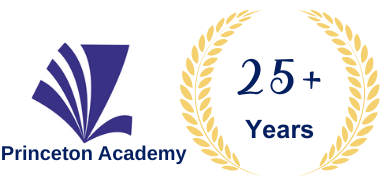Remuneration Planning
Maximize take-home pay and Minimize tax outgo.
Introduction
When negotiating terms of employment with a prospective employee, a higher take home salary works in the company’s favour. A well-structured salary package which maximizes take-home pay and minimizes tax outgo is better than a higher CTC to attract top talent.
Before taking a final call on a particular pay structure, considering employees’ long-term and short-term financial goals helps to retain talent. Modifying the tax structure can simultaneously impact the net take home and retirement corpus as some components of the package may not come to employees immediately and others may be either full taxable or tax-free.
Generally, the CTC can be broadly divided in four components— basic, allowances, perquisites and retirement benefits/contributions. Each component is treated in a different way for tax purposes and can impact the tax liability. The workshop will discuss Taxes on salary, remuneration planning, perquisite taxation, taxation of retirement benefits under the old and new tax regime.
Course Content
Remuneration planning under different situations
- Remuneration planning to minimize employees’ tax liability. Making selection between regular tax regime and alternative tax regime.
- Restructuring of present remuneration plan keeping in view present and future tax liability of employees.
- Tax on different perquisites provided to employees (like – rent-free/concessional accommodation, car, driver, education, domestic servant, interest-free/concessional lo an, sweat equity shares, touring/travelling facility, gift, club facility, credit card facility, meal vouchers, refreshments, use of movable assets, transfer of movable assets, medical facility, leave travel concession).
- Tax-free perquisites.
- Tax planning devices – How to convert within legal parameter a taxable perquisite into tax-free perquisite or perquisite taxable at concessional rate.
- Documentation required for including perquisites while calculating TDS
- Documents needed from employees for deductions as well as other income for proper computation.
- TDS and taxation of retirement benefits (gratuity, leave encashment, provident fund, pension and voluntary retirement).
- · Tax incentives that are available and not available.
- Generate guidelines for your employees. – · When it is beneficial to opt for the regular tax regime or when tax liability is lower under the alternative tax regime:
TDS on Salary under section 192
- Obligation and Estimation of employees salary under 192
- New perquisite valuation rules.
- Preparation of Form No. 16 in different situations When an employee has joined or left during a financial year, details of other incomes/loss of employees in Form No. 16, details of tax deducted by others in respect of other income reported by employees in Form No. 16.
- Documents related to deductions as well as other incom e for proper computation of TDS.
- TDS and taxation of retirement benefits (gratuity, leav e encashment, provident fund, pension and voluntary retirement).
Exclusive One-on-One Consulting : Personalized Salary tax planning and problem resolution
- Individual sessions focusing on specific issues
- Solving Real-Life Tax Problems
- Participants can present their tax scenarios
- Analysis of tax planning for companies, salary and other incomes.
- Hands-on problem-solving with immediate feedback
- Strategic Tax Planning for Individuals and Businesses
- TDS and Beyond: Ensuring Compliance and Maximizing Savings
- Designing Competitive Salary Structures
- Cost to Company (CTC) Breakdown
- Balancing Take-Home Pay with Compliance & Long-Term Benefits (PF, Gratuity)
Other Similar programs
COURSE SCHEDULE & FEES
DOWNLOAD COURSE CONTENTS
Please click the button below to download the course content. You'll need to provide your contact information to receive the document.
INCOMPANY/GROUP TRAINING REQUEST
Why Choose Our Incompany Program?
- 🎯 Tailored content specific to your business goals
- 👥 Train entire teams together, saving time and cost
- 📍 Delivered at your location or virtually
- 📅 Flexible scheduling to suit your timelines
- 📈 Increase retention and application of skills
